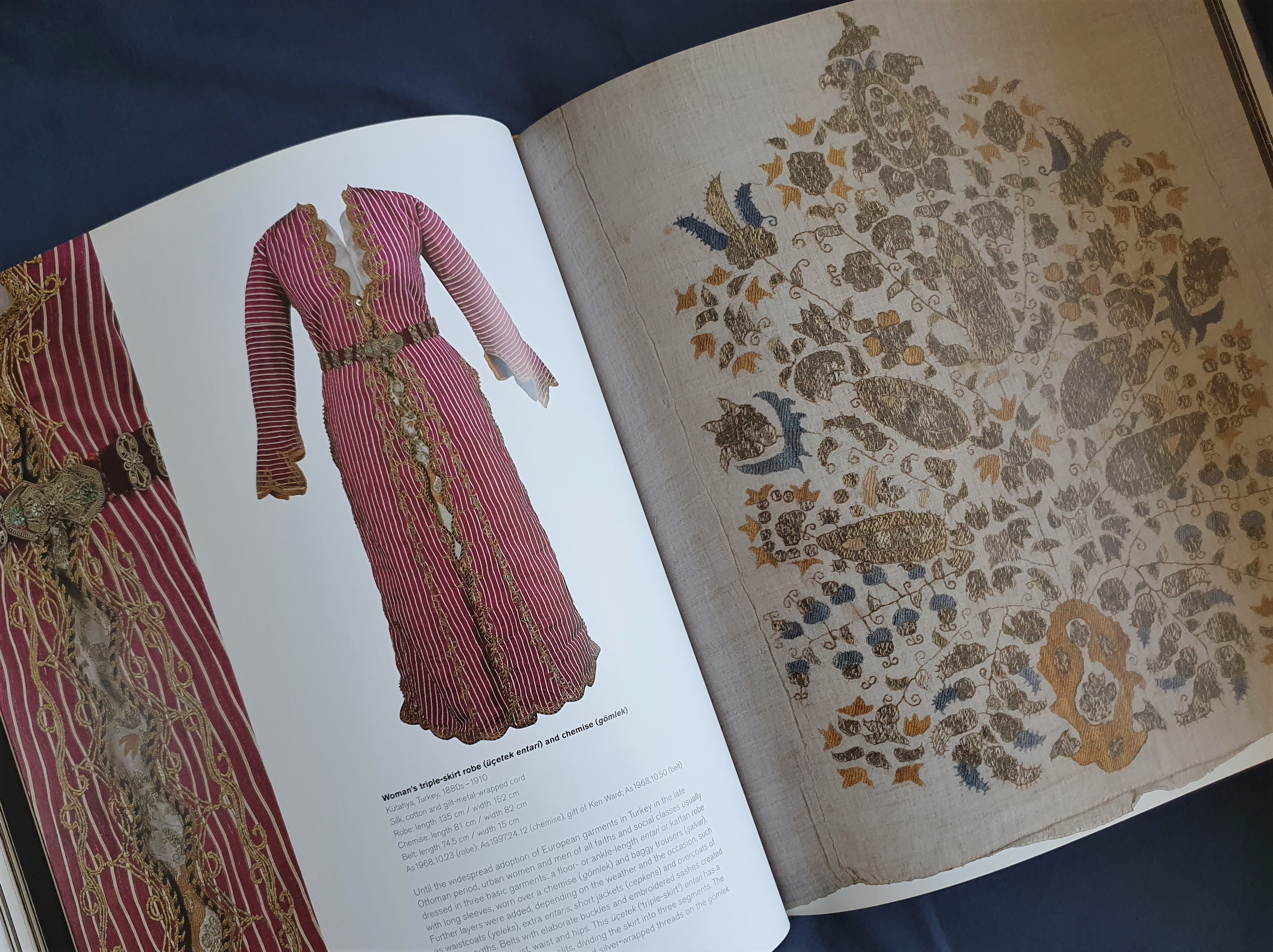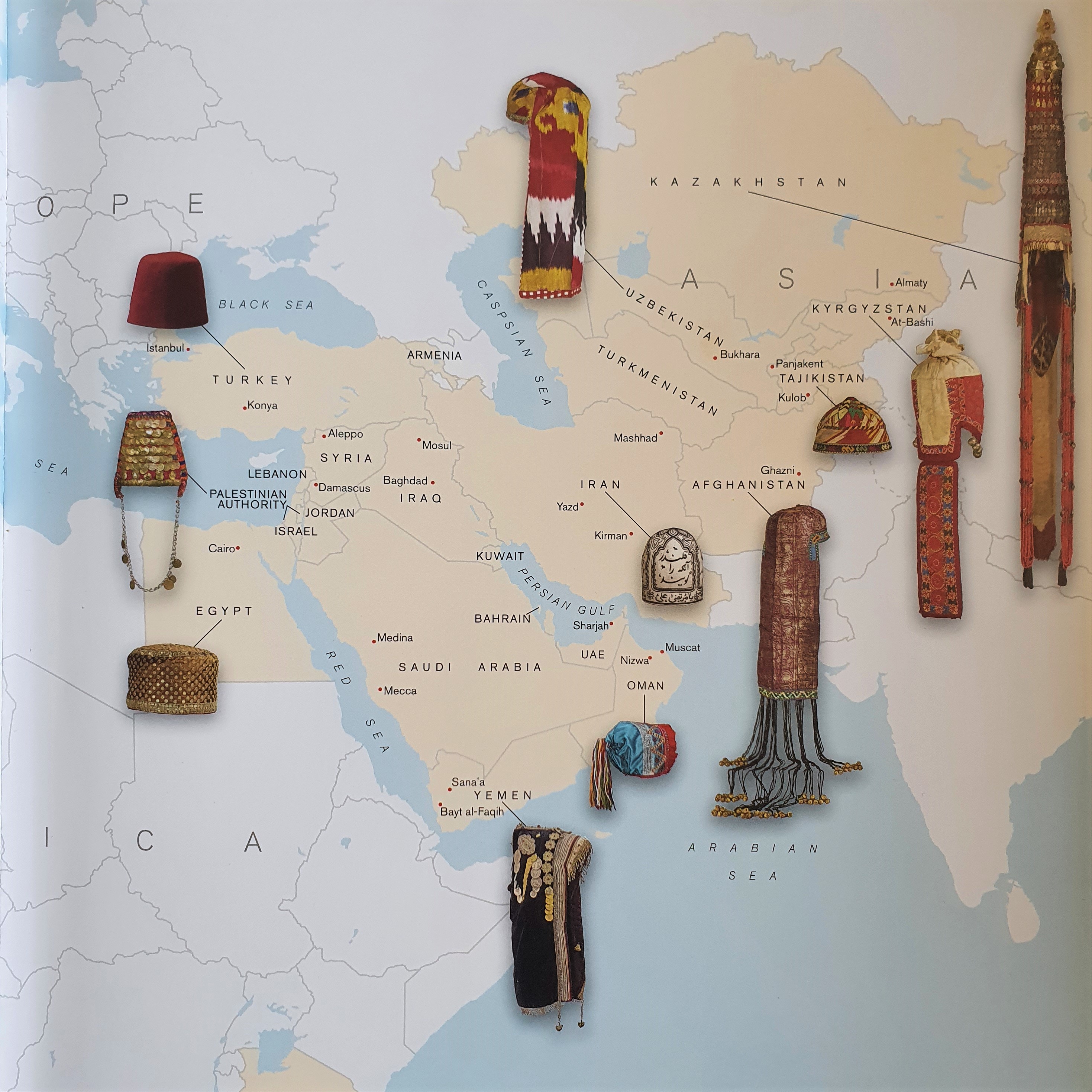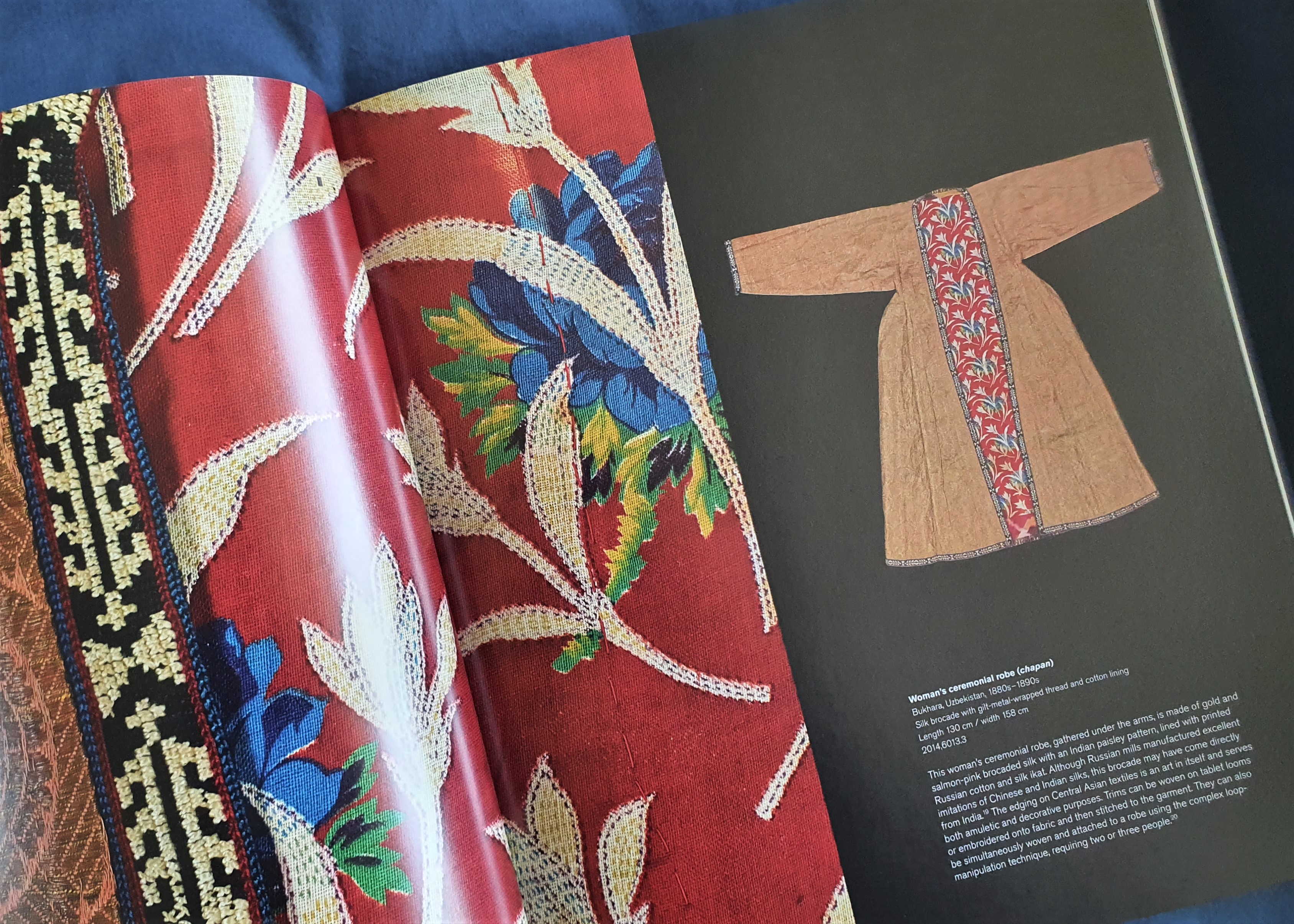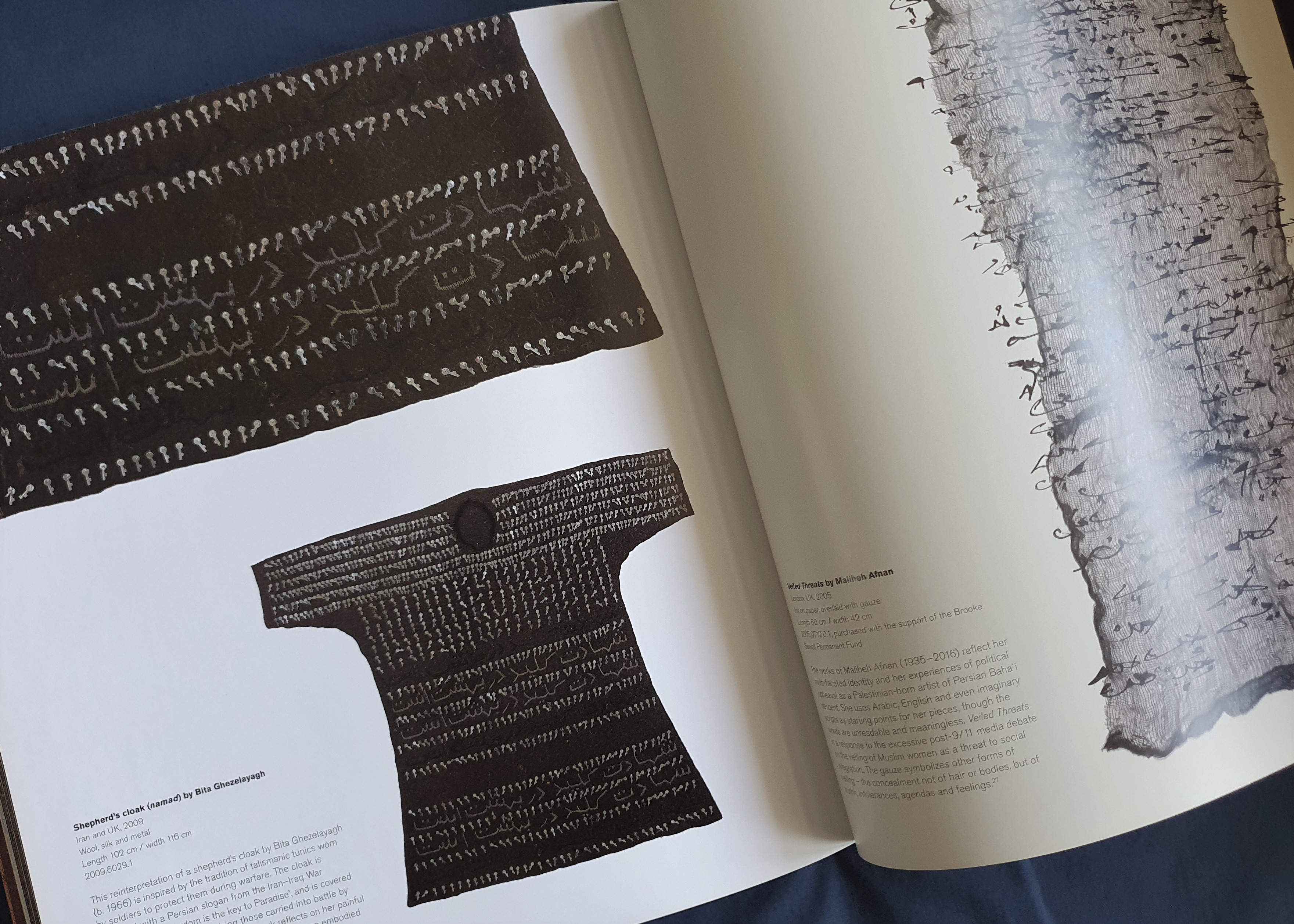Author: Fahmida Suleman
Photographer: Various
Publisher: Thames & Hudson Ltd
Format & layout
249 x 279 x 28 mm (9.8" x 11" x 1.1”)
Hardcover
240 pages
ISBN 978-0500519912
Text on a white background; images on black background
English

Photos, Illustrations & Diagrams
The book is richly illustrated with photos, a few illustrations and a good map. The items shown in the book are predominantly from the collection of the
British Museum where the author was Phyllis Bishop Curator of the Modern Middle Eastern collections from 2009.
Each image is accompanied by a detailed description that includes country of origin, date, materials, and size, as well as a short explanation of the item and its use. The images include full items, close-up images of details, as well as images of people using or wearing the items, which helps bring them to life.

Introduction
The author explains in the introduction that the book includes more than two hundred textiles selected from the British Museum collection of almost three thousand pieces from this region. The items vary from men’s, women’s and children’s garments, hats and headdresses, mosque curtains and prayermats, floor coverings and tent hangings, furnishings such as handtowels, cushions, storage sacks, and other items such as purses, dolls, animal trappings, amulets, and contemporary works of art.
The author also chose items to cover as many countries in the region as possible and has examples from Afghanistan, Bahrain, Egypt, Iran, Iraq, Jordan, Kazakhstan, Kuwait, Kyrgyzstan, Lebanon, Oman, Palestine, Saudi Arabia, Syria, Tajikistan, Turkey, Turkmenistan, UAE, Uzbekistan and Yemen, as well as examples from Armenia and Zanzibar.
The items date from between the late 18
th and early 20
th centuries. Although most of this region is sometimes referred to as the Islamic world, as this is the predominant religion, most of the items discussed in this book can not be assigned to one religion.

Content
The book is divided into six sections.
Rather than present the textiles by region or by culture, the author chose to divide the book by theme ‘to enable cross-regional comparisons to be made of the function, significance, and symbolic meaning of textiles within people’s lives. Each of the first five chapters relates to a phase or facet of a person’s life in which textiles feature predominantly’:
- Childhood
- Marriage and ceremony
- Status and identity
- Religion and belief
- House and homestead
- Politics and conflict – in this last section, the author included a few contemporary works of art which grapple with both past and more recent political circumstances in the region.

Conclusion
This is a wonderful window into a collection that few people will have access to. The author’s curatorial flair allowed her to put together a selection of items and present them in a way that tells a story and brings the items to life. Her decision to present the items by theme rather than by function, origin, or era, allows the reader to get a glimpse of many different ways of life that occurred in this region over two centuries. The photography is beautiful, rich, and a testament to the wide variety of textiles, craftmanship, styles, and ways of embellishments that could be found across this region. This is a wonderful book and valuable addition to any textile book collection.
Get your copy
here.








